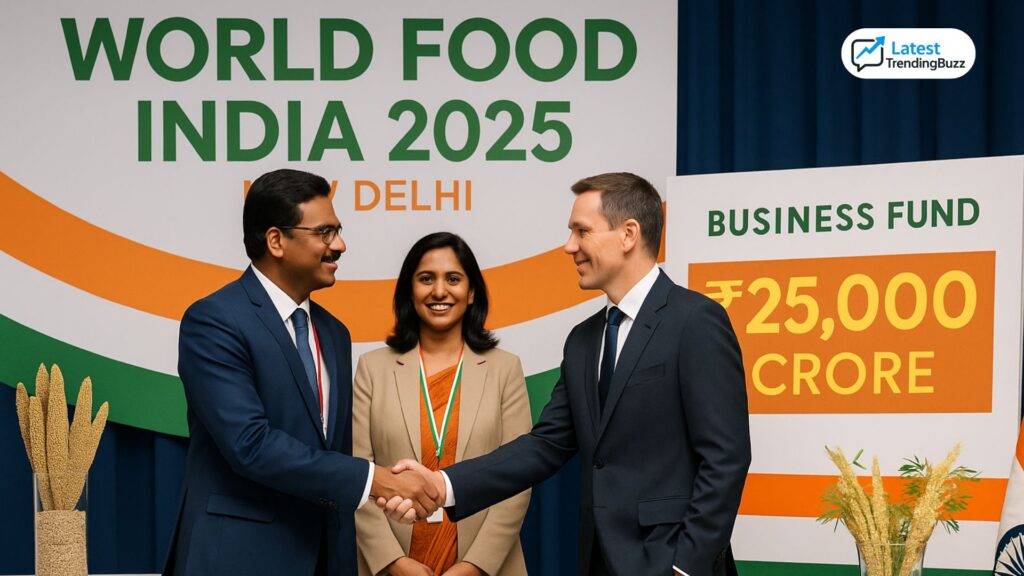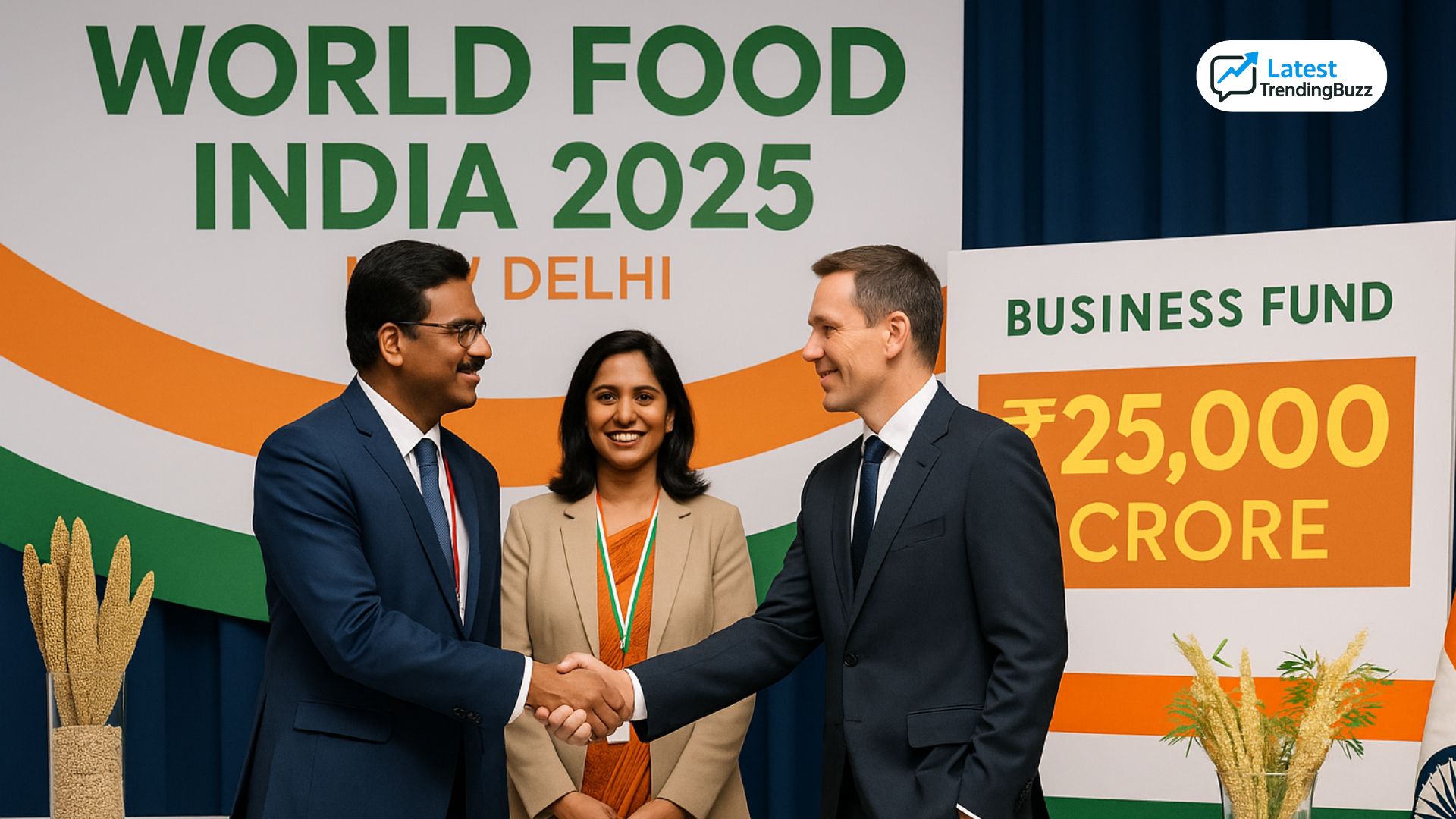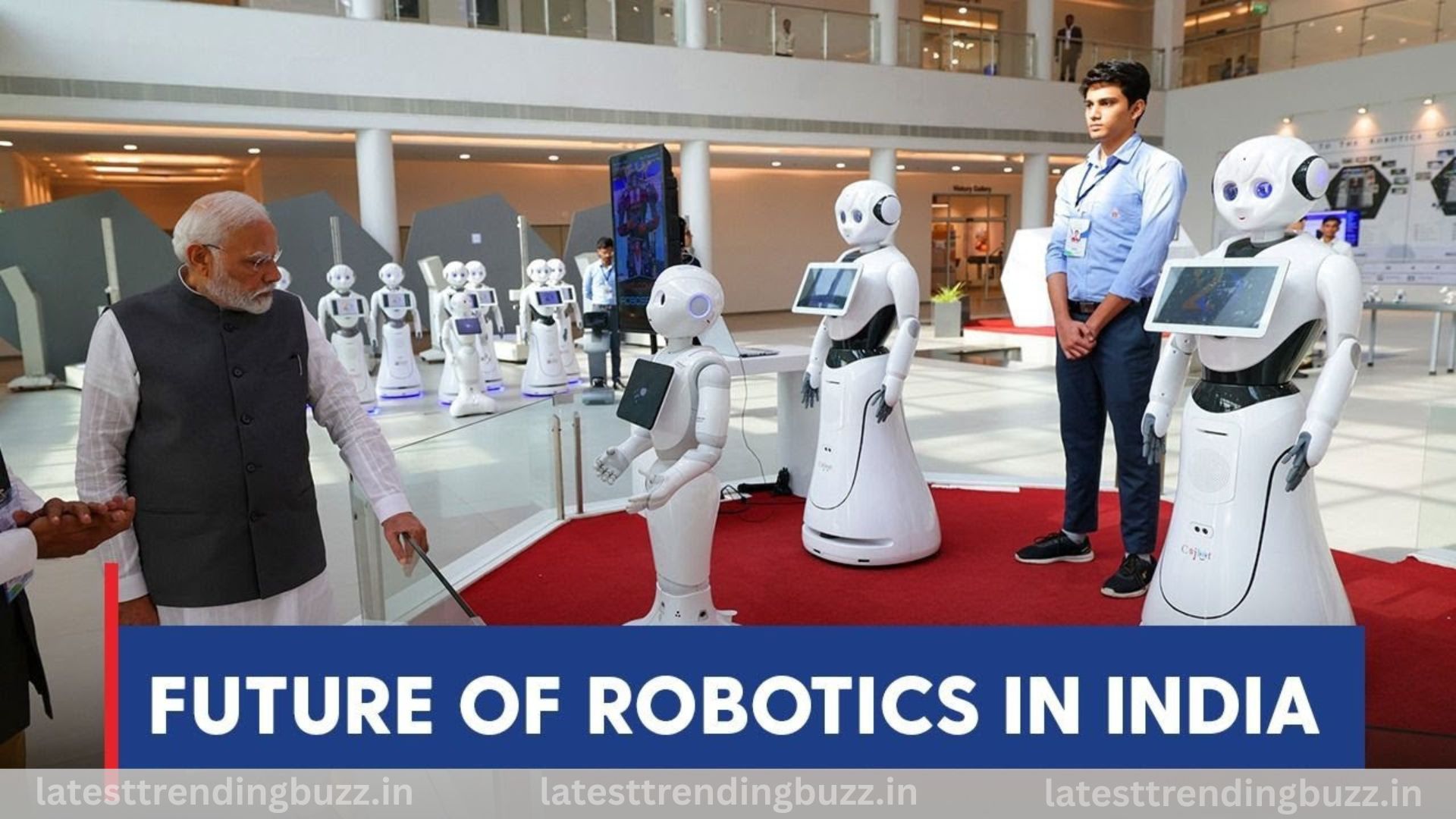World Food India 2025 MoUs Picture this: New Delhi, September 2025. The halls of World Food India 2025 are buzzing with energy. Farmers, global CEOs, startup founders, and government leaders are all in one place. On the big screen, the number flashes—₹25,000 crore worth of MoUs signed.
It wasn’t just a business announcement. It felt like India standing up and saying to the world: “We’re ready to lead the global food revolution.”
Food in India has always been more than just nutrition—it’s culture, community, and identity. From street vendors in Chandni Chowk serving chaats to giant corporates exporting ready-to-eat curries, food ties us all together. And that’s exactly what World Food India 2025 MoUs was about—how do we take India’s food diversity and turn it into a global powerhouse?
Let’s dive deep into the companies, opportunities, risks, and the future this ₹25,000 crore investment promises.
What is the World Food India 2025 MoUs, & Why does it matter?
World Food India isn’t just another trade fair. It’s the flagship food processing event organised by the Ministry of Food Processing Industries (MoFPI).
Think of it as the Olympics of the food business—where India showcases its food culture, companies pitch billion-dollar ideas, and the government rolls out the red carpet for investors.
World Food India 2025 MoUs
Past editions gave us a glimpse of what’s possible, but 2025? This one broke records.
- 21 MoUs signed.
- ₹25,000 crore in promised investments.
- Delegates from over 50 countries.
For India, which loses nearly 40% of fresh produce to wastage due to weak storage and logistics, these deals could be transformational.
The Big Number: ₹25,000 Crore in World Food India 2025 MoUs
So what exactly does ₹25,000 crore mean?
It means new factories, storage units, food parks, and research centres. It means farmers selling more, startups scaling faster, and India becoming a global food processing hub.
While an MoU isn’t money in the bank yet, it’s a serious commitment. Most of these deals translate into real investments within 1–3 years.
Which Companies Are Involved?
Here’s the exciting part—this wasn’t just about Indian FMCG giants. It was a mix of global players, local champions, and nimble startups.
Global Giants
- Cargill & ADM: Eyeing India for plant-based protein and edible oils.
- Nestlé: Expanding into health snacks and fortified foods.
- Danone: Interested in dairy innovations for Indian markets.
🇮🇳 Indian FMCG Leaders
- ITC & Britannia: Announced plans for new processing plants.
- Amul: Scaling value-added dairy—flavoured milk, probiotic drinks.
- Haldiram’s: Targeting exports with frozen and packaged Indian snacks.
Agri-Tech Startups, World Food India 2025 MoUs
- Companies focusing on AI-driven farm analytics, cold chains, and supply-chain tracking also bagged deals.
Beverage & Dairy Players, World Food India 2025 MoUs
- Several MoUs for millet-based energy drinks, dairy alternatives, and flavoured beverages.
Together, these represent the entire food ecosystem—from farm to fork.
Also Read: Pawan Kalyan OG Box Office: Day-Wise Collection & Records
Farmers: Winners or Just Bystanders?
Let’s be honest—the big question always is: “Will farmers actually benefit?”
On paper, yes:
- More factories mean better demand for raw produce.
- Contract farming arrangements could give farmers a stable income.
- Cold storage units mean less wastage, higher prices.
But the caution is real:
- If corporates dominate, small farmers may get sidelined.
- Pricing transparency will decide whether farmers truly earn more.
The government has promised that farmer-producer organisations (FPOs) will be integrated into these deals. That could be the key to ensuring the World Food India 2025 MoUs trickle down to the grassroots.

Why This Investment Matters for India
Here’s why this is bigger than just business news:
- Jobs, Jobs, Jobs
- Each new plant = thousands of direct and indirect jobs.
- Rural youth, especially, stand to benefit.
- Global Branding
- India wants to move from “food exporter” to “food processing hub of the world.”
- Imagine “Made in India” labels on ready-to-eat meals in supermarkets in London, Dubai, or Tokyo.
- Nutrition Boost
- With millets, fortified rice, and healthy snacks, the investments could reshape how India eats.
- Wastage Control
- Building strong cold chains means fewer crops rotting before they reach your plate.
Big Trends Shaping the Future
They signed at World Food India 2025 MoUs give us a sneak peek into what’s next.
1. Millets Go Mainstream
2023 was the International Year of Millets. Two years later, the trend is alive. Expect millet pasta, millet cookies, and millet-based drinks everywhere.
2. Plant-Based Foods
From soy patties to almond milk, plant-based diets are the hot new segment. Global giants are betting big on India here.
3. Cold Chains
Cold storage facilities near farms could revolutionise rural economies.
4. Export Push
From spices to ready-to-eat curries, India wants to push food exports past $100 billion by 2030.
5. Agri-Tech
AI, drones, and IoT sensors in farming—what was once futuristic is becoming real.
Also Read: Learn AI or Lose Your Job? Accenture Cuts 11,000 Employees in 90 Days
Overseas Angle
What’s fascinating is how global players see India.
- For multinationals, India is both a market and a supplier.
- Indian snacks and frozen foods are already bestsellers abroad.
- With better food parks and logistics, India could rival China as a global food export leader.
What Records Did World Food India 2025 MoUs Break?
- Largest investment commitments since the event’s inception.
- First-time startups got equal spotlight with big corporations.
- Highest foreign delegate turnout.
FAQs
Q1. What was the total investment announced at WFI 2025?
₹25,000 crore via 21 MoUs.
Q2. Which sectors will benefit most?
Food processing, cold storage, dairy, beverages, agri-tech.
Q3. Will farmers really gain?
If FPOs are included and fair contracts enforced—yes.
Q4. How will this help India globally?
Stronger exports, healthier food branding, and positioning as a global hub.
Q5. When will we see results?
Some projects start in 2025–26; major impacts likely visible by 2027.
Final Verdict
World Food India 2025 MoUs wasn’t just about numbers—it was about vision.
- For farmers, it’s a promise of stability.
- For rural India, it’s jobs and infrastructure.
- For consumers, it’s healthier, more diverse food.
- For the world, it’s India emerging as a food leader.
Of course, execution is everything. If the ₹25,000 crore really materialises and benefits are distributed fairly, this summit could be remembered as the turning point when India’s food story went global.
For now, one thing is certain—India’s plate is only getting bigger, and the world is hungry for a share.
Disclaimer
This blog is for informational purposes only. All data is based on announcements and reports available as of September 2025. Actual outcomes may vary depending on project implementation and market conditions.














